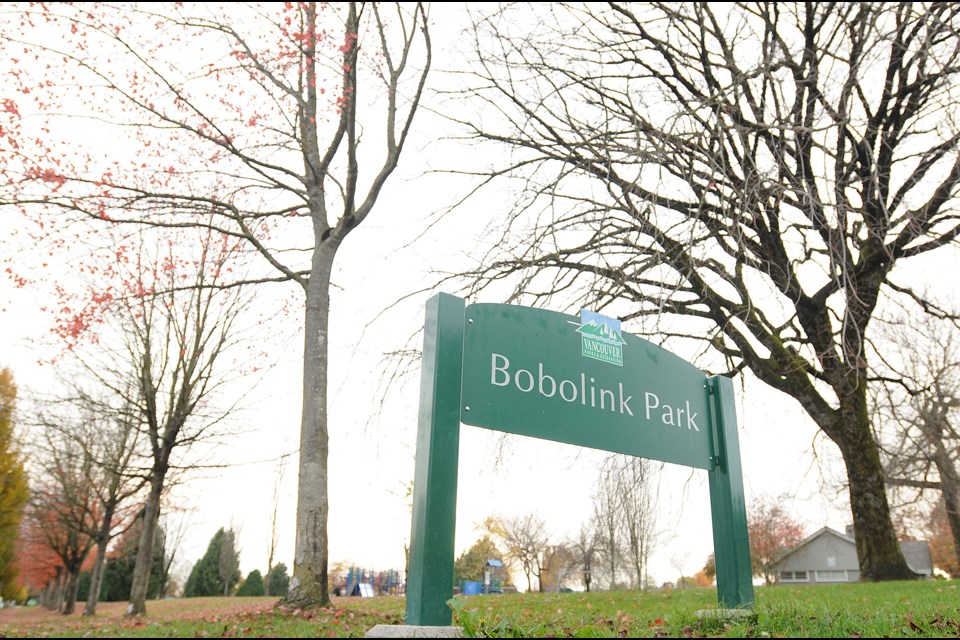You might think that a city located in an area famous for hosting the world’s largest gathering of bald eagles each winter would’ve named at least one of its many parks after the majestic bird of prey. Instead, Vancouver’s only parks named after birds are Gastown’s Pigeon Park (which on paper is officially named Pioneer Place) and Bobolink Park in Victoria-Fraserview.
You’re far more likely, however, to spot a pigeon or an eagle at the sleepy 3.82-hectare park than a Bobolink.
The medium-sized songbirds, the only North American bird that is black underneath and white on the back, are known for flying great distances. They travel around 20,000 kilometres each year round-trip from their winter home in South America. But the B.C. Interior is about as far west as they go here in North America.
“Bobolinks have been seen in Vancouver, but very rarely,” said Penticton-based bird books author Dick Cannings in an email. “In B.C. they normally occur in hayfields in southern Interior valleys.”
According to the B.C. Breeding Bird Atlas, the westernmost confirmed sighting of a Bobolink (Dolichonyx oryzivorus) in recent years has been near the retirement haven of Osoyoos.
The park, which first opened in July 1956 and features popular soccer and softball fields as well as a wading pool, is actually named for nearby Bobolink Avenue. The Central Mortgage and Housing Corporation, the original name for the Canada Mortgage and Housing Corporation that built the post-war Fraserview subdivision, is said to have named the street after a golf course located somewhere in the British Isles, which makes sense given the park’s proximity to Fraserview Golf Course. Although Fraser Valley Birding member Gord Gadsen pointed out there aren’t any Bobolinks on U.K. links either.
“It would be interesting to know where the British golf course got the name as Bobolinks do not occur in Europe short of a handful that have blown off course over the years and have caused great excitement with British birdwatchers,” said Gadsen.
As for the unusual name itself, “Bobolink” is an onomatopoeia meant to imitate the bird’s call that was first coined in the late 1700s by, judging from online audio samples, someone with a good imagination and/or poor hearing.
afleming@vancourier.com
twitter.com/flematic



